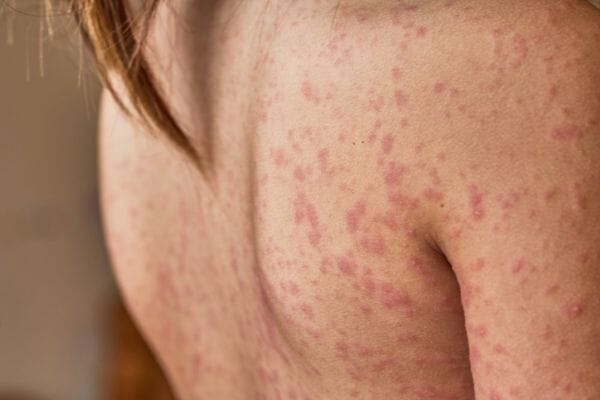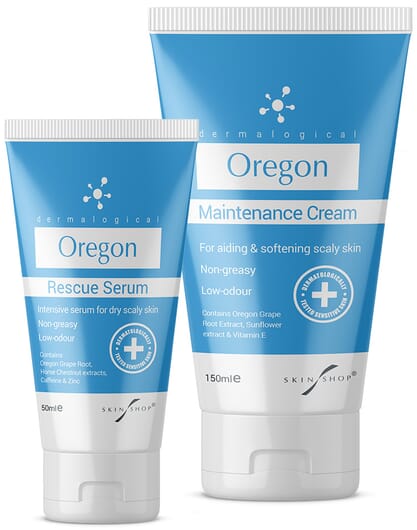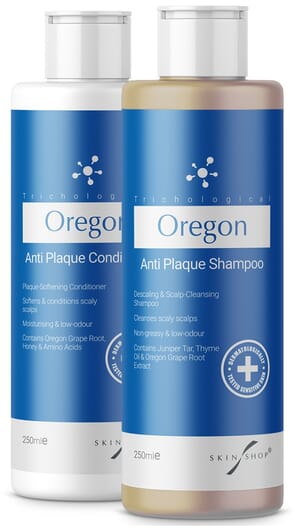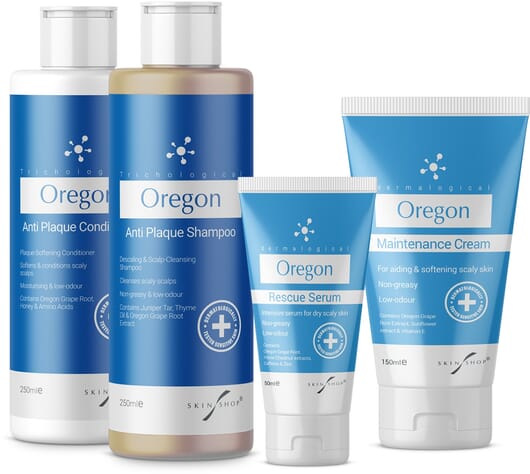New research (1) may finally have come up with the answer to a question that has been puzzling scientists for years; why do some people with the autoimmune skin condition psoriasis also go on to develop psoriatic arthritis?
Psoriatic arthritis (PsA) is a type of joint inflammation that can, in a significant minority of sufferers, be a secondary condition of psoriasis on the skin. Estimates suggest that as many as 30% of people with psoriasis also get psoriatic arthritis.
Scientists from The Australian National University (ANU) have discovered that when a person with psoriasis has two copies, or clones, of the mutated gene that causes skin psoriasis by triggering abnormal function of T cells that are the body’s gatekeeper immune cells, they are highly likely to go on to develop psoriatic arthritis. The research found that these cloned mutated T cells are able to pass from the blood into the joint fluid.
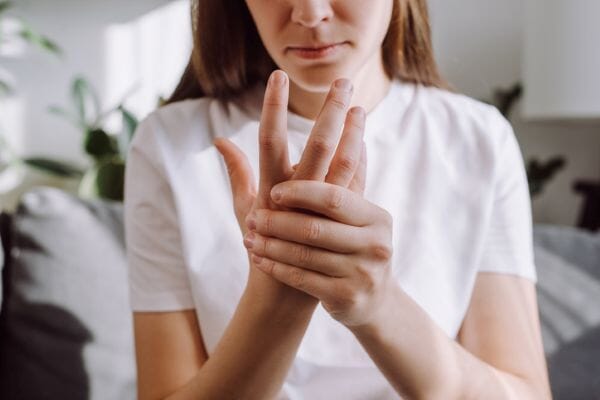
This is the first scientific discovery that has been made on the precise cause of psoriatic arthritis and goes some way to explain why only some people with psoriasis go on to also develop chronic joint pain and inflammation.
Psoriasis and psoriatic arthritis are both autoimmune diseases, which is whereby the immune system attacks healthy cells after mistakenly seeing them as a threat.
Mild psoriatic arthritis is sometimes referred to as oligoarticular, meaning it affects four or fewer joints in the body. More severe psoriatic arthritis is often called polyarticular, meaning it affects five or more joints. Regardless of the severity, psoriatic arthritis can be very painful and can affect the ability to do daily tasks and move comfortably.
While psoriatic arthritis is often described simply as that, there are in fact five types of psoriatic arthritis.
Arthritis mutilans
This is the most severe and destructive form of PsA, causing significant joint damage, particularly in the hands and feet. It can lead to telescoping digits due to bone loss.
Spondylitis:
This type involves inflammation and stiffness in the spine (neck, lower back, and sacroiliac joints) and can also affect peripheral joints.

Asymmetric oligoarticular PsA
This type affects fewer than five joints, and these joints are not necessarily on both sides of the body. For example, it might affect the knee on one side and a couple of fingers on the other.
Symmetric polyarthritis
This type affects five or more joints, and the affected joints are typically symmetrical (eg, both hands, both knees). It can resemble rheumatoid arthritis but often includes involvement of the distal interphalangeal joints (closest to the fingernails and toenails).

Distal interphalangeal predominant (DIP) PsA:
This type primarily affects the DIP joints, the ones closest to the fingernails and toenails, and can cause pitting, cracking, or separation of the nails.
Treatments for skin psoriasis
Skin psoriasis is characterised by clearly defined, red and scaly plaques, made of over-proliferating skin cells called keratinocytes. It is classified as an immune-mediated inflammatory disease.
It can pop up as a single patch, but it usually appears as several and can even affect the better part of the body and the scalp. Signs and symptoms often fluctuate in severity and extent.
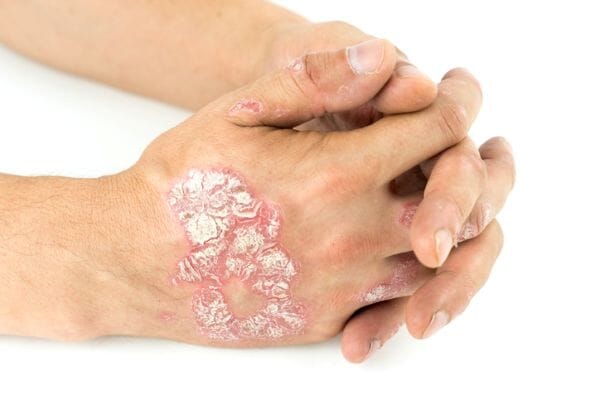
Prescription treatments for psoriasis
When treating skin psoriasis via prescription medications, one or more of the following are usually the first line of defence;
Topical steroids
Topical steroid creams or ointments (topical corticosteroids) are commonly used to treat mild to moderate psoriasis in most areas of the body. The treatment works by reducing inflammation, which slows the production of skin cells and reduces itching.
Vitamin D Creams
Vitamin D analogue creams are also commonly prescribed along with or instead of steroid creams. They work by slowing the production of skin cells as they also have an anti-inflammatory effect.
Calcineurin Inhibitors
Calcineurin inhibitors are ointments that reduce the activity of the immune system and help to reduce inflammation. They're sometimes used to treat psoriasis affecting sensitive areas, such as the face, the genitals but can cause skin irritation or a burning and itching sensation.
Non-Prescription Treatments for Psoriasis
Oregon Grape Root Skincare
The Oregon Skincare Range, is a natural psoriasis treatment option for the skin and scalp whose main ingredinet Oregon Grape Root (OGR) is a plant used traditionally by native Americans for skin diseases, which has been widely tested in preclinical and controlled clinical trials and shown to be effective in decreasing proliferative activity of the keratinocytes and downregulate pathological immune mechanisms in skin, both of which are beneficial for .
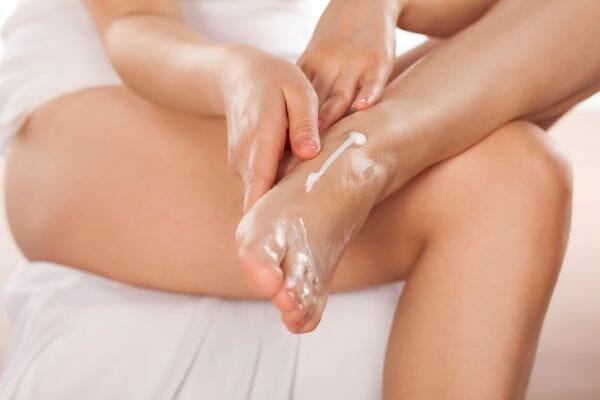
Dermatologist Dr Eva Melegh says, “The Oregon skincare range has a track record of over 10 years of use on thousands of psoriasis sufferers due to its therapeutical effects without evidence of any significant negative side-effects (which is the main concern about benchmark steroid-based therapies for psoriasis.) This backs up the findings in clinical trials on the therapeutic benefits of Oregon grape root extract for skin prone to psoriasis.”
Lifestyle factors that can help ease psoriasis
Fish Omegas
Fish from oily fish such as mackerel and sardines can hugely help improve the moisture and flexibility of skin prone to psoriasis. Tinned fish is just as beneficial when it comes to getting your daily dose of omegas as fresh fish so there is no excuse that you can’t get to the fish market.

UV Exposure
Exposing your skin to sunlight can still hugely benefit skin prone to psoriasis. It’s a misconception that is has to be bright and sunny for the skin to benefit from UV exposure. Cloudy overcast days still allow UV rays through so getting your skin out for at least half an hour to an hour a day can help you get a regular dose of UV light therapy for your psoriasis.

Reduced Hair Styling
Scalp psoriasis in one of the most common places for psoriasis to occur and is very uncomfortable and highly visible.
One of the reasons cited by skin experts on the rise and prevalence of scalp psoriasis is the over-use of hair styling products. Hair products that contain sticky or clay like ingredients as well as hair dyes can all cause additional bacteria to get into and stick to the scalp, which can trigger psoriasis flare ups as the bacteria causes inflammation which can then trigger a psoriasis flare.

Dyes and perfumes in hair products as well as detergents to remove grease can also cause the already sensitive scalp of psoriasis sufferers to become hyper-sensitive and inflamed which can trigger a flare up.
Using hair products designed specifically for scalps prone to psoriasis with anti-plaque ingredients can help prevent scalp psoriasis flare ups and when they do come keep them to a minimum. Oregon Anti-Plaque Shampoo and Oregon Anti-Plaque Conditioner has been developed by hair scientists and trialled at Bath University for helping to reduce the inflammation and plaque build-up associated with scalp psoriasis.
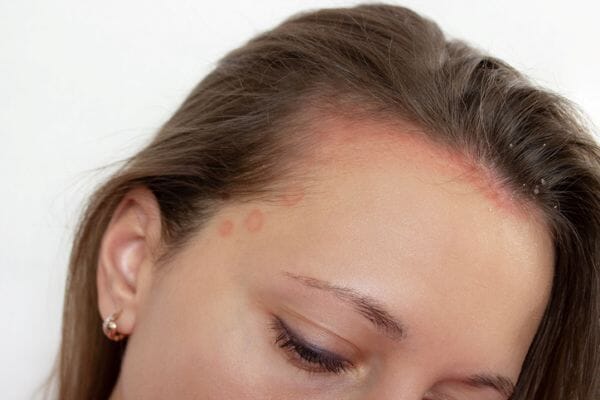
"The results of the trial show a very high success rate for Oregon Anti-Plaque Shampoo which was rated highly by testers because of its effect at not only clearing the scalp of scales but also preventing their return, reducing any underlying erythema (inflammation) and causing a marked reduction in irritation and sensitivity of the scalp," says trichologist Tony Maleedy, who carried out the trial.
Treatments for Psoriatic Arthritis
Psoriatic arthritis (PsA) is a chronic disease that causes swelling, pain, and stiffness in joints and entheses (places where tendons and ligaments connect to bones). Psoriatic arthritis can develop at any age and can occur regardless of the severity of skin psoriasis but it almost always develops as a secondary condition from skin psoriasis.
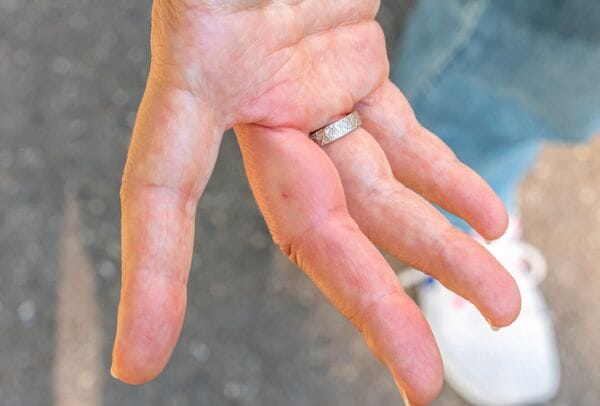
PsA tends to be worse in the mornings and symptoms include joints that are red, discoloured, or warm to the touch, joint tenderness or stiffness, dactylitis (sausage-like swelling in fingers or toes), swollen feet and ankles, changes to the nails, such as pitting or separation from the nail bed and sometimes pain in the lower back.
Prescription treatments for psoriatic arthritis
When treating psoriatic arthritis via prescription medications, one of the following is usually the first line of defence;
Non-steroidal anti-inflammatory drugs (NSAIDs):
These can help with mild pain and inflammation but may not be sufficient for everyone and used long-term can have side effects, namely stomach issues.
Disease-modifying anti-rheumatic drugs (DMARDs):
DMARDs are used for moderate to severe symptoms and can take several months to show effect.
Biologics
These medications target specific parts of the immune system to reduce inflammation and are often used when DMARDs are not effective enough.
Non-Prescription Treatments for Psoriatic Arthritis
Actimas Celafen
There’s a rising concern about long-term use of NSAID’s because they come with a list of negative side effects, so the use of natural joint pain relief to reduce reliance on medicated pain relief are increasingly encouraged.
Actimas Celafen is a natural joint pain relief skin therapy that contains a specific long-chain fatty acid preparation which has been shown to aide in joint lubrication and joit pain relief and is proven to take effect within 30 minutes of application to reduce pain and inflammation and improve morning joint mobility.
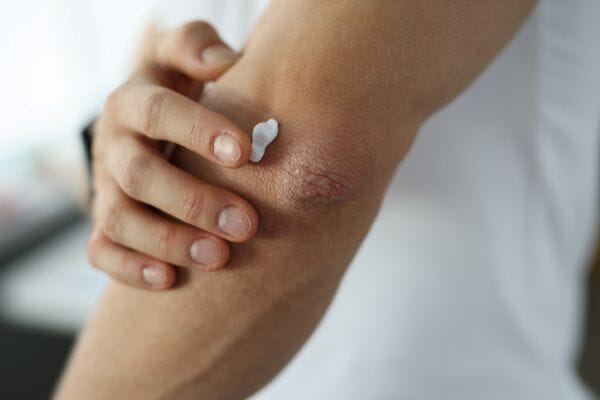
GP Dr Donald Grant says, “There’s good evidence for the efficacy of long chain fatty acids in preparations such as Celafen for the treatment of chronic joint stiffness, an is especially effective in the extremities such as fingers and toes and hands and feet. Anything that can lower the reliance and habitual use of conventional painkillers is a bonus because they so often carry negative side effects for many patients using them on a regular basis.”
Applying Celafen 20-30 minutes before getting up while you are still warm in bed can aide the process even more.
Lifestyle factors that can help ease psoriatic arthritis
Bed stretching
Before getting out of bed in the morning, do some gentle stretching for 5-10 minutes while you are still warm under the covers. Start with gently doing wrist and ankle circles. Then bend your knees. Gently lift one hip and then the other off the bed and slightly rotate it upwards.

Turn onto your front and stretch your arms gently forward with your knees in a kneeling position to stretch out your lower back. Gently rotate your head clockwise and then anticlockwise.
Warm Shower
The warmth of the shower or bath can help further relieve stiff morning joints by boosting circulation to the joints. Put on a pre-warmed bath robe after showering to continue to keep morning joints warm.
Add joint-lubricating supplements with breakfast
Adding omega oil supplements along with glucosamine and chondroitin to your morning routine can help with lubricating joint cartilage and many studies have shown that chondroitin helps reduce joint stiffness.
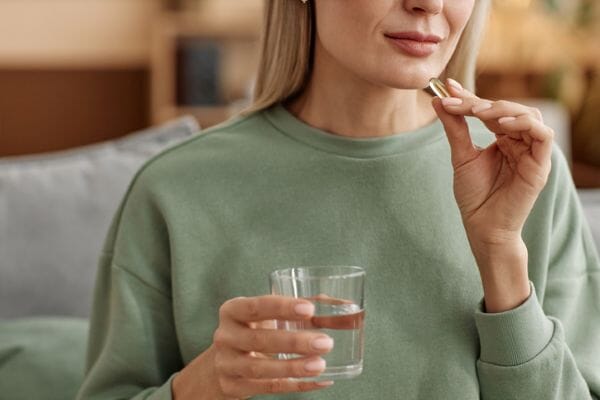
Drink anti-inflammatory morning drinks
Studies have also found that tart cheery juice contains compounds that can modulate inflammatory signalling pathways, helping to reduce inflammation in the joints. Green tea is well known for its anti-inflammatory effects.

Refs
1. Frank Penkava et al. (2020) Single-cell sequencing reveals a clonal expansion of pro-inflammatory synovial CD8 T cells expressing tissue homing receptors in psoriatic arthritis. Nature Communications DOI: 10.1038/s41467-020-18513-6



